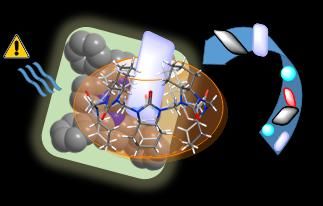In scientific first, researchers visualize naturally occurring mRNA
In a technique that could eventually shed light on how gene expression influences human disease, scientists at Albert Einstein College of Medicine of Yeshiva University have for the first time ever successfully visualized single molecules of naturally-occurring messenger RNA (mRNA) transcribed in living mammalian cells. The scientific achievement is detailed in Nature Methods.
Gene expression involves transcribing a gene's DNA into molecules of mRNA. These molecules then migrate from a cell's nucleus into the cytoplasm, where they serve as blueprints for protein construction.
Robert Singer, Ph.D., codirector of the Gruss Lipper Biophotonics Center and professor and cochair of anatomy and structural biology, was senior author of the paper. Working with his colleagues, he generated a transgenic mouse in which genes coding for the structural protein beta actin would, when expressed, yield fluorescently labeled mRNA. Beta actin mRNA is a highly expressed molecule found in all mammalian tissues.
The technique used by the Einstein researchers should be applicable for monitoring the expression of any gene of interest. Prior to this study, Einstein researchers had monitored mRNA molecules transcribed by artificial genes.
"Our report is the first demonstration that our technique can be used to visualize the expression of an essential gene in mammalian cells," said Timothée Lionnet, Ph.D., a research fellow in Dr. Singer's lab and lead author of the Nature Methods paper. "We can study beta actin RNA molecules over their life cycle in a variety of cell types and discover where they are distributed within the cell. This has important consequences for human disease like cancer, since the way molecules of mRNA are localized within tumor cells correlates with the ability of these cells to spread, or metastasize."
Most read news

Get the analytics and lab tech industry in your inbox
By submitting this form you agree that LUMITOS AG will send you the newsletter(s) selected above by email. Your data will not be passed on to third parties. Your data will be stored and processed in accordance with our data protection regulations. LUMITOS may contact you by email for the purpose of advertising or market and opinion surveys. You can revoke your consent at any time without giving reasons to LUMITOS AG, Ernst-Augustin-Str. 2, 12489 Berlin, Germany or by e-mail at revoke@lumitos.com with effect for the future. In addition, each email contains a link to unsubscribe from the corresponding newsletter.



























































